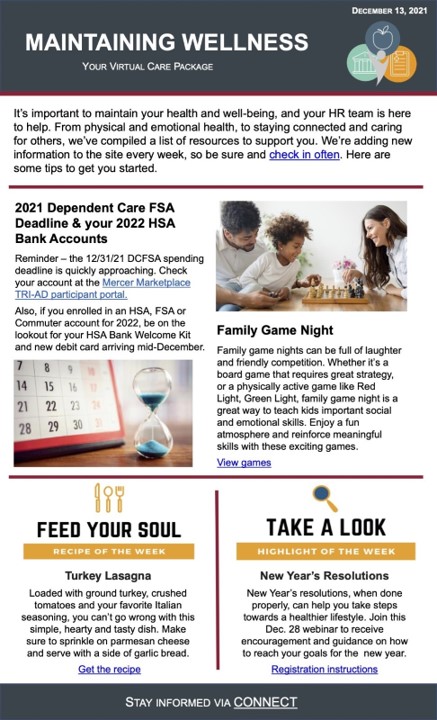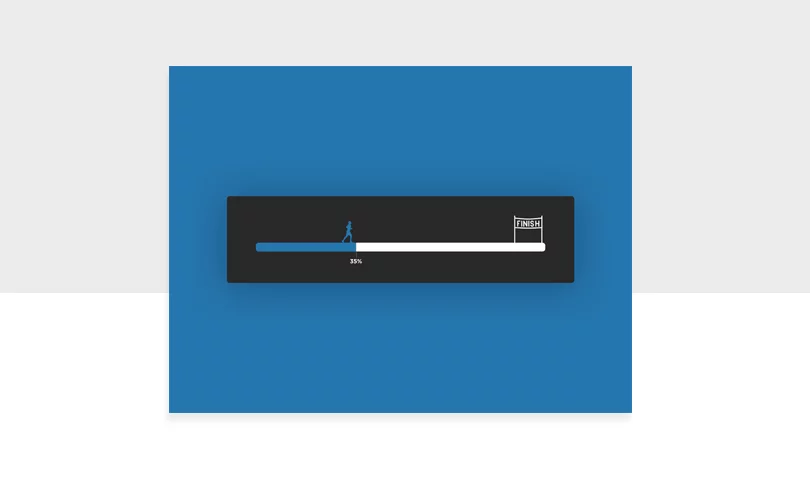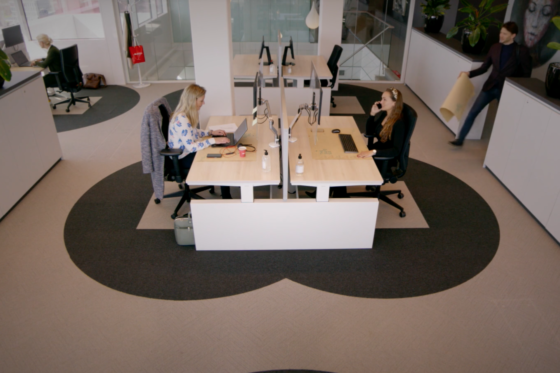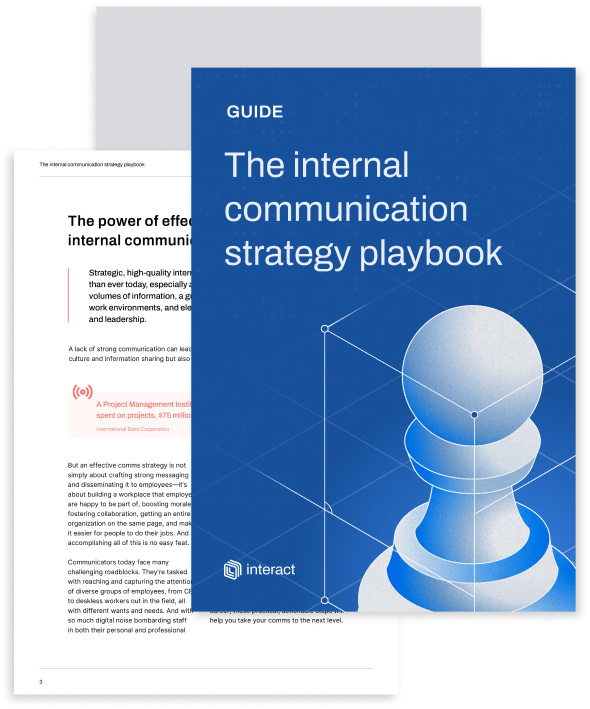A million-dollar question for organizations is ‘How can I create and sustain positive engagement with internal communications?’ This article examines how ‘nudge theory’ may promote greater workplace engagement and the adoption of positive workplace behaviors.
In 2008, the behavioral economists Richard Thaler and Cass Sunstein published the highly influential book Nudge: Improving Decisions about Health, Wealth, and Happiness. In it, Thaler and Sunstein outlined how to create interventions (nudges) that influence people to take certain behaviors without removing their freedom of choice.
The idea of nudging is best conceptualized from the perspective of governments or other large organizations (e.g., healthcare providers), let’s call them the nudgers. The nudgers don’t want to entirely remove choice from individuals (e.g., citizens) or penalize them financially for taking actions that are perceived as negative, but they do want to create easy and appealing opportunities for individuals to make decisions that are seen as positive over the long term.
So, nudging is not the same as setting laws that ban harmful behaviors, it’s simply a way of ensuring people have choices but gently influencing them to make certain choices.

Most nudges don’t take place at the level of conscious thought but are so subtle and small that they steer the unconscious mind in positive directions. When you consider that as much as 95% of human thought happens below the level of the conscious mind though, it’s easy to see why the idea of nudge theory has become a strong one in behavioral economics and governmental policy.
Examples of nudge theory in action
Healthcare is one area of public life that is often connected with nudge theory. In their book, Thaler and Sunstein suggested that a way to increase the number of organ donors would be to introduce a program where the renewal of a driver’s license also depended on the applicant saying whether or not they would like to be an organ donor.
14 steps to creating an effective comms strategy
Instituting this change, while also creating websites supporting a positive view of organ donation, would nudge more people into becoming organ donors.
Similarly, other healthcare initiatives include discouraging smoking by adding graphic images of disease on cigarette packaging and reducing the consumption of sugar by moving candy bars away from the checkout areas of some grocery stores.
Companies use nudges too

Nudge theory isn’t just about getting you to quit candy or cigarettes for your health, it’s also frequently used by marketers and UX designers to encourage you to buy.
How?
Let’s say a travel company wants to sell you next year’s vacation, but they are aware that many consumers don’t want to pay now when they won’t get to enjoy their expensive trip for many months.
Working on the theory that making small, incremental purchasing choices is easier than making one big one, airlines are especially good at nudging buyers along the sales journey.
An initial webpage might give you a low price for a single flight, the next page will give you an additional cost for the return flight. By this point, you have taken several steps and already become mentally locked into the idea of making a purchase.
This is where nudges come in the form of additional charges for extra legroom, shorter waiting times, options for extra bags, hire cars, hotels, insurance. Many of these upsell nudges are entirely incidental to your original purchase but may be great revenue drivers for the seller.
Nudge theory in the workplace
As with any other community, workplaces are drastically influenced by the behavior of people within them. If every employee chooses to drop litter on the floor, the office quickly turns into a giant dumpster, visitors take away a terrible impression, and mental sloppiness may also creep into everyone’s work.
So, how do companies limit negative actions and promote those seen as positive?
First, even if we set aside the serious legal issues to do with behaving in a non-discriminatory fashion (where hard and fast rules are in place), organizations also have workplace guidelines to limit undesirable behavior, such as eating food in certain areas or wearing sports clothing.
14 steps to creating an effective comms strategy
There are certain aspects of workplace behavior though that no one can mandate without infringing on the liberty of individuals to choose. This is where nudging may come in.
Although we all know that eating fresh fruit and vegetables, drinking plenty of water, and taking regular breaks are beneficial, not everyone wants to follow those suggestions. And it would be difficult to impose guidelines to make people eat their greens without your workplace turning into a kindergarten.
So, some practical examples of health-positive nudges in a workplace might include:
- Placing more taps and water coolers where workers can easily access them.
- Offering free fruit in prominent office locations.
- Displaying nutritional information in the workplace cafeteria so that people know what they are consuming.
- Limiting online meetings to 25 minutes rather than 30 so that people have a chance to stretch their legs in between.
How to use nudge theory to increase workplace engagement

Getting employees to actively engage with internal communications and company initiatives is a challenge that many organizations face.
According to Gallup, 51% of employees are disengaged and 13% are ‘actively disengaged’. In their reporting, being actively disengaged means spreading negativity to colleagues.
Raising engagement and intranet user adoption beyond this bar of 36% means finding innovative ways to encourage positive engagement without having to mandate everyone to like the CEO’s latest blog or attend the quarterly all-hands meeting.
Here are just a few ideas on how you can nudge your audience into a higher state of workplace engagement.
#1 Let’s get quizzical
Trivia quizzes focused on company culture and information can add a fun, competitive element to internal comms. Instead of having quizzes about general knowledge or current events, make them specific to the news that’s happening in your organization and encourage colleagues to keep abreast of new developments so they can win.
- Which new starter’s dog is called Lil BowWow?
- What’s the location of our newest office?
- How many customers did we acquire in March?
If it’s a piece of information that you’ve published on the intranet or sent out in comms, people have access to it, and you can reward good behavior by holding a quiz. Maybe they’ll even win a prize beyond just showing everyone what an A-student they are.
14 steps to creating an effective comms strategy
#2 The paradox of choice
Although it’s hard to believe when we’re triumphantly cruising the supermarket aisles and marveling at the choices, having too many options can be negative too. Swamping people with a superabundance of information can cause them to procrastinate and then fail to act.
One famous study from 2000 found that shoppers faced with a larger selection of options were more likely to peruse but less likely to buy than those with fewer options.
In terms of nudging employees towards workplace engagement, we might think about the number of communications options we present at one time. Take the example of a weekly staff newsletter.
Although we may want to use each newsletter to promote multiple different stories and links, the danger of presenting too many is that we overwhelm the reader and cause them not to click on any.
It may be better to limit the number of possible links to those which are crucial for the organization that week, and so promote stronger action from readers. Better still, send a newsletter but have one or two links pointing to the intranet, thus directing all traffic to one easily updated source.

Source: Campaign Monitor
#3 Encourage serendipity
One problem with hybrid and remote work models is that they decrease the number of serendipitous encounters that occur when lots of colleagues gather in an office or other location.
Formerly, you may have bumped into a new person in the canteen or had an interesting conversation in the elevator. Those chance meetings are important because they can help cement social bonds, foster greater collaboration, and spur innovation when individuals from different teams exchange ideas. The isolation of home-based working reduces our conversations to those we are already familiar with and limits these chance casual collisions.
You can nudge your people into more chance meetings, however, with an internal tool such as Meetsy, or simply by arranging “company roulette” style meetups where everyone is assigned to occasional conversations with others across the business. By promoting a culture of communication you may create a more receptive environment for internal comms generally.
14 steps to creating an effective comms strategy
#4 The niggling incompletion of less than 100%
Most people, especially new starters, want to show that they’re completing everything that’s asked of them. Understandably, they don’t want to leave things at 75% when 100% could be achieved. This can be a useful thing to know when designing communications nudges that will encourage greater workplace engagement.
Many organizations are keen for employees to have fully completed intranet user profiles with photos, background, specialisms, skills, contact details, and more. Having a large bank of user profiles can help colleagues to know each other a little better, to find the right contacts to resolve a problem, and to self-service via the intranet when they need to find an answer. Getting everyone to fill out their profiles can be a challenge though, which is where the nudge is useful.
Seeing a completion bar or percentage score on their profiles means users receive a subconscious prompt that they still have a little way to go before they hit the magic 100% target.

#5 Nudge creativity or productivity through design
Nudge theory and design are old bedfellows. From coins decals that stop littering to fun stairwells that encourage people to walk more, clever design can engage users and prompt them to make positive decisions.

Similar ideas have been implemented within workplaces too, most often to make people eat more healthily, move more frequently, or put their trash in the right places.

In an era of hybrid and remote working though, intranet design can also be an important tool for encouraging workplace engagement with internal comms. Intranet homepages and landing pages are good examples of customizable design surfaces that can reflect user needs and nudge them into greater engagement.
One way to approach this would be to think about how your intranet creates an appealing digital workstation for different user personas, geographies, and locations. For designers and creatives, a homepage might be full of dynamic content and images. For employees within finance or legal teams, however, there could be a need for more sober designs that reflect their need for easy access to policies, integrations, or newsfeeds.
By making these user interfaces relevant, customized, and legible to the individuals using them (accounting for differences within the same organization), you may nudge them into greater engagement than simply by having the same design right across your whole workforce.
A final thought on honesty and nudge theory
It’s important to note that although nudges have become commonplace in daily life – and are routinely used by marketers – it may be wise to consider being honest about nudging staff before going full-bore on any plans.
In most cases, nudges in the workplace will be small and done with good intentions (encouraging healthy eating or more movement), but it’s still important to consider how employees may feel about them. For that reason, publicizing new programs to encourage workplace engagement and outlining any changes will give people an understanding of why and how the comms they receive may look different.
Hopefully, that kind of honesty will help organizations to achieve a positive mix of workplace engagement and transparency.


